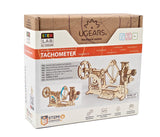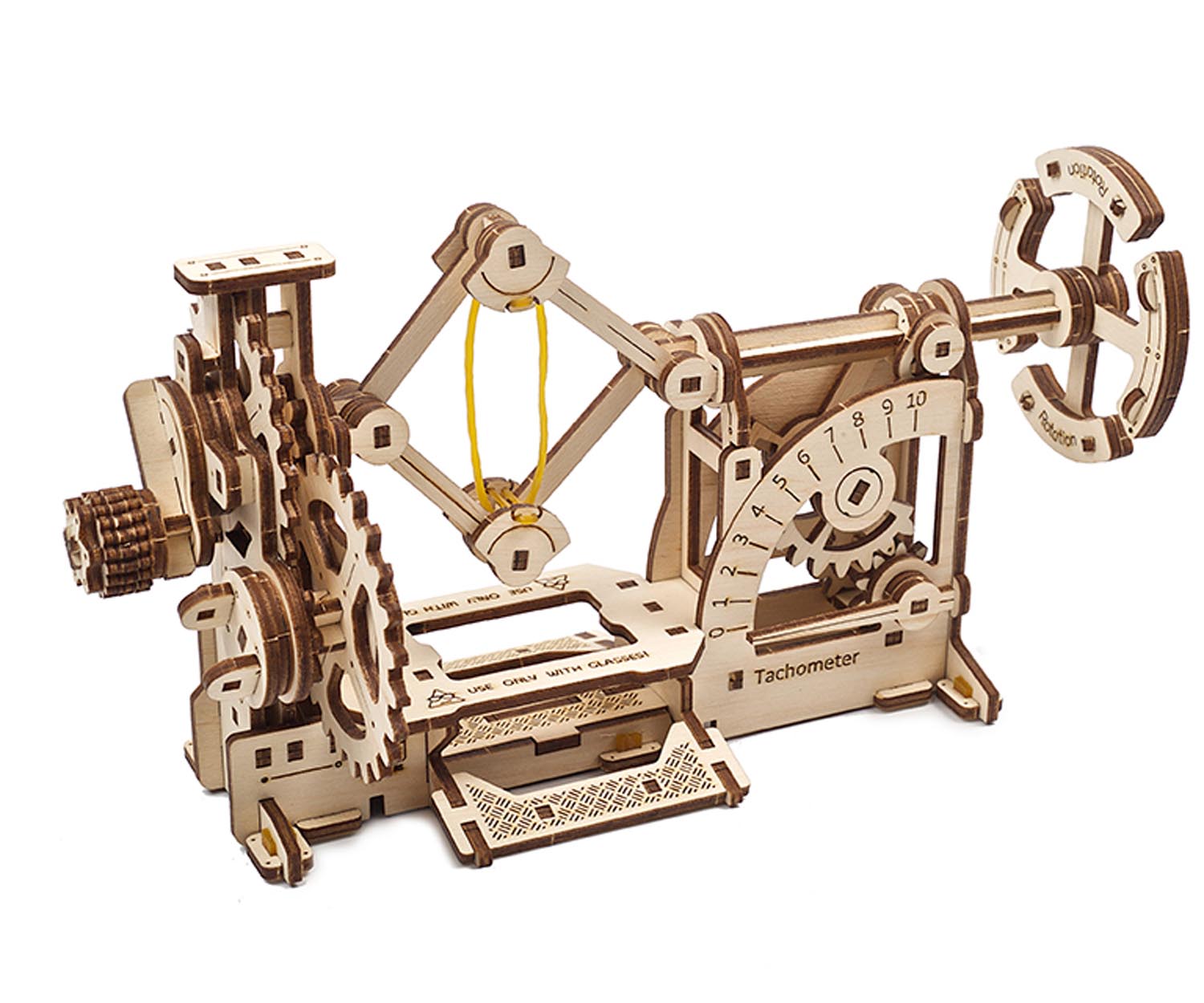

UGears STEM LAB Tachometer
A tachometer is a device designed to measure the rotational speed of various parts in engines and other mechanisms. It calculates revolutions per minute (RPM). The tachometer also measures and monitors load limits, in order to decrease or increase RPM so that the engine or mechanism runs within its optimal parameters
The tachometer is used in mechanisms where it is necessary to accurately track RPM to avoid the negative consequences of overloads. Savvy motorists use tachometers to know when to shift gears (in cars with manual transmissions) and to control the load on the engine, thereby increasing the operating life of their vehicles.
The 3D Tachometer model kit from UGEARS' STEM Lab collection is a fully operational DIY wooden model of a tachometer, ready for you to assemble. When the handle is rotated, movement is transmitted through a reducer, increasing the RPM and displacing twin weights in the centrifugal unit. The higher the RPM, the more centrifugal force separates the weights, shifting a movable axle with a flywheel. A pointer mechanism (dial) is fixed to the axle; the more the axle shifts (higher RPM), the more the dial arrow deflects, indicating higher speed rotation
- The model kit comes with a QR-code to the study guide about the mechanism, the principal of its working, the main characteristics, formulas. It also includes interesting assignments.
- Dive into augmented reality and look at how the Tachometer works. Interact with the model via a special AR application from Ugears.
Number of parts: 133
Level: Easy
Assembly Time: 2 hours

